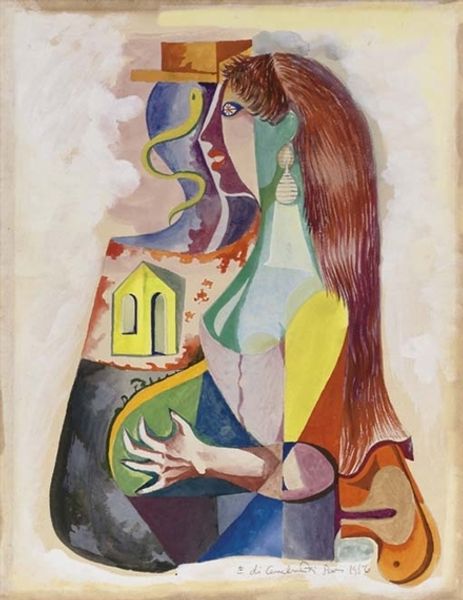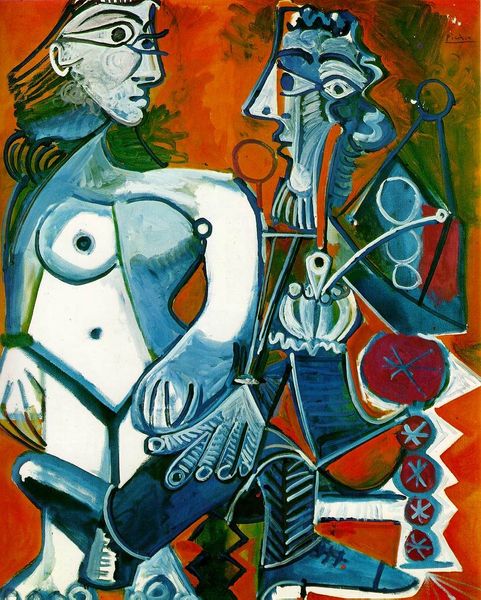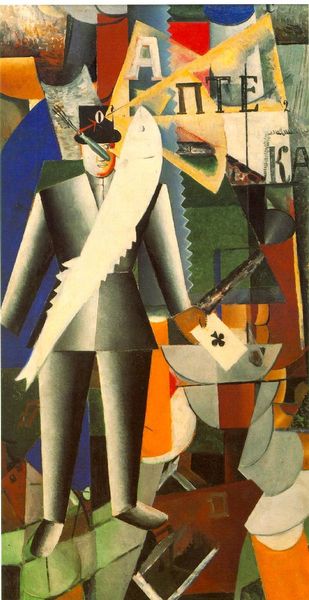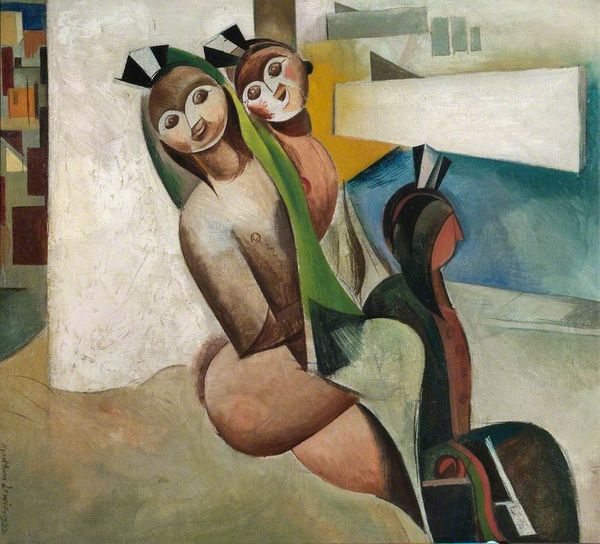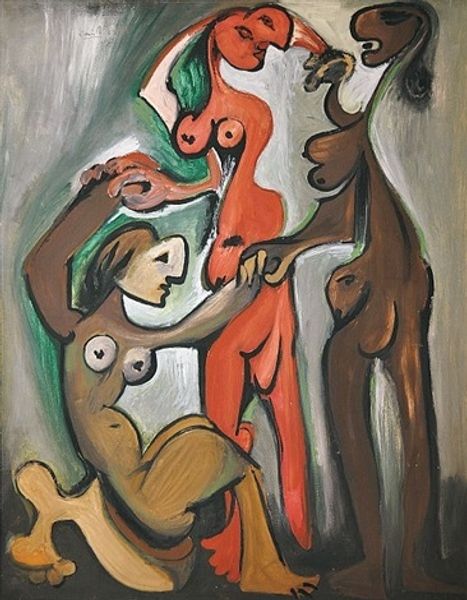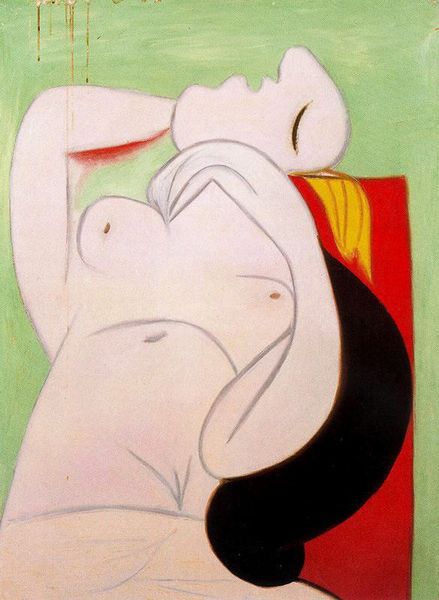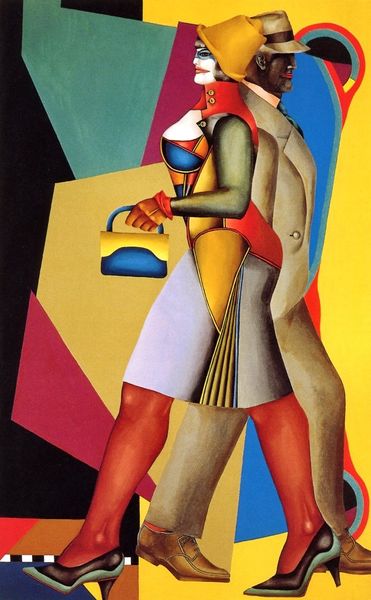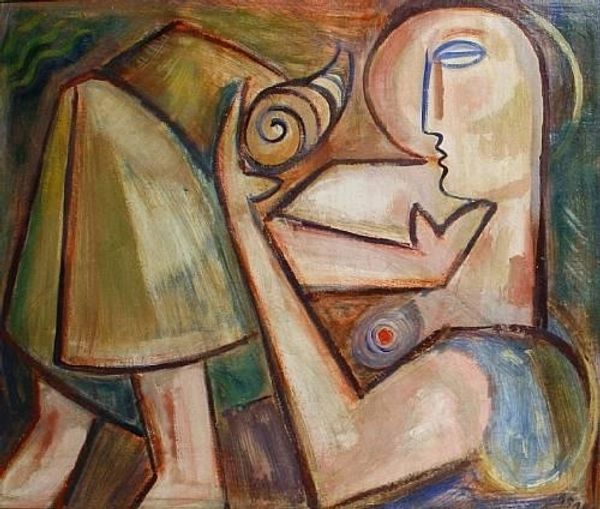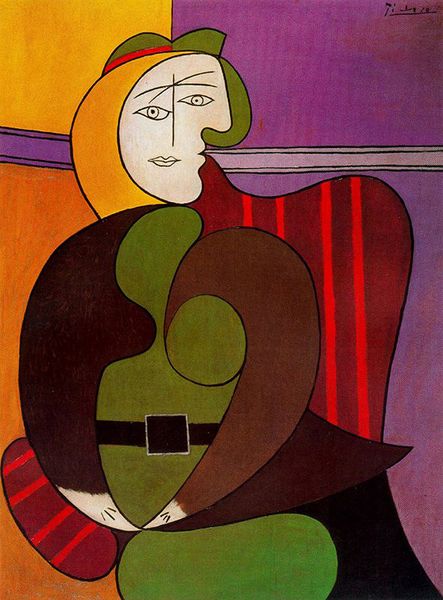
mixed-media, painting
#
portrait
#
mixed-media
#
painting
#
figuration
#
neo expressionist
#
group-portraits
#
expressionism
#
modernism
#
erotic-art
Copyright: Richard Lindner,Fair Use
Editor: Richard Lindner's "Pareja," a mixed-media painting, strikes me immediately with its almost theatrical artificiality. The figures appear to be constructed rather than represented. What do you see in terms of its materials and what they might suggest? Curator: This construction is key. Look at how Lindner combines paint with other materials—potentially collage elements—to create texture and disrupt the traditional painted surface. The exaggerated, almost cartoonish, presentation of the figures alongside these varying textures challenges the artifice of representation itself. Consider the corset detail – the use of lacing almost fetishizes this imposed material structure of the bodies. What does the work as a product, or an object for sale, reveal about society? Editor: I hadn't thought about that. It’s definitely a provocative representation, even a bit unsettling, especially in the exaggeration of the figures' forms and how the materials emphasize a sense of construction and display. I can't quite pinpoint what feelings emerge: repulsion or attraction. Are we looking at a critique of constructed identities and the commodification of desire? Curator: Precisely! Lindner isn’t simply representing a couple; he’s deconstructing the very notion of pairing and presentation, highlighting how we "produce" ourselves through fashion, adornment, and performance. Think of this piece in the context of post-war consumer culture, the burgeoning advertising industry. How are bodies and identities being packaged and sold? And is there resistance in his choice of such unconventional forms to render the human body? Editor: That reframing changes my perspective. Seeing it as a material comment on construction and commodification provides a much richer context to understanding Lindner's technique, rather than solely thinking about the work in formal elements. Curator: Indeed. By examining the materiality and the means of production, we gain insight into the social and cultural forces at play and can question how identities are fabricated. Editor: I see "Pareja" now as a striking commentary on the societal pressures that fabricate appearances.
Comments
No comments
Be the first to comment and join the conversation on the ultimate creative platform.
